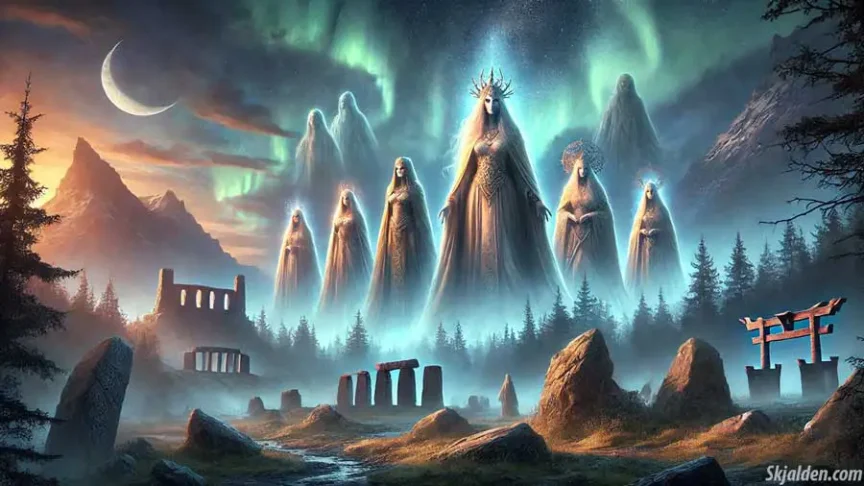The Disir, a term from Norse mythology, encapsulates a broad and complex group of female spirits whose roles and characteristics are as varied as the texts and traditions that mention them. These spiritual entities blend attributes of guardians, warriors, and ancestral figures, making them both unique and integral within the Norse and other Germanic mythologies.
Understanding the Multifaceted Roles of the Disir
The Disir are often intertwined with other spiritual beings in Germanic mythology, such as the Valkyries and land spirits, making their exact nature difficult to pinpoint. While Valkyries are typically seen as Odin’s helpers in guiding the souls of warriors, the Disir extend their influence more broadly as guardian spirits of individuals, families, or even specific locations. This overlap is highlighted in various sagas and poems where the terms for these beings are used interchangeably, reflecting the fluid nature of their identities.
The connection between the Disir and the Valkyries is particularly fascinating. In some poems, Valkyries are specifically called “Odin’s Disir,” suggesting a shared sphere of influence, particularly in warfare. However, unlike the purely martial Valkyries, the Disir are also portrayed as nurturing and protective, embodying the role of tutelary spirits who watch over their charges with a fierce dedication.
Ancestral Connections and Guardian Roles
Additionally, the Disir are often depicted as ancestral spirits, particularly those of deceased female ancestors. This role ties them closely with the concept of the elves, who are similarly described in Germanic folklore. This ancestral aspect suggests that the Disir were thought to be more intimately connected with the daily lives and well-being of the people who revered them.
The cultural importance of the Disir is most prominently displayed through festivals such as the dísablót and dísaþing, held during the onset of winter in Norse and other Germanic societies. These festivals included sacrifices and banquets, underscoring the Disir’s significant role in spiritual and communal life. In Sweden, the dísaþing combined political assembly with religious observance, further highlighting the societal roles these spirits played.
The Anglo-Saxon modraniht, or “Mother’s Night,” represents a similar tradition, held around New Year’s and connected to a wider Germanic and Celtic veneration of maternal and guardian spirits. These events show the cultural integration and reverence of female spiritual entities across various Germanic peoples, emphasizing fertility, protection, and warfare.
In summary, the Disir represents a dynamic and vital part of Norse and Germanic spiritual heritage. Rather than being a defined or static group, their roles and significance evolved, reflecting the changing needs and beliefs of the societies that revered them. The enduring legacy of the Disir highlights their fundamental role as protectors and guides, revered across generations and landscapes.
